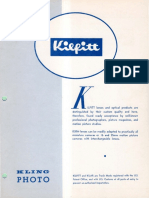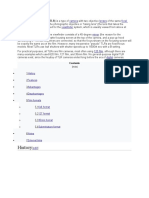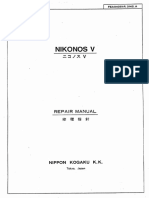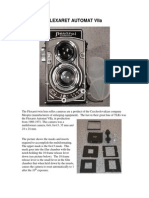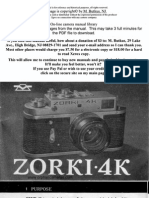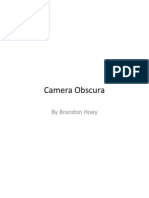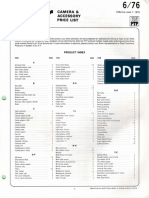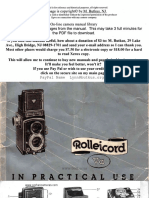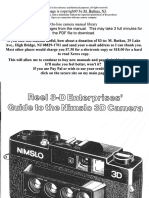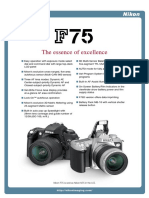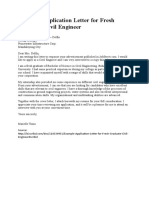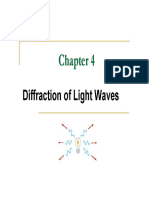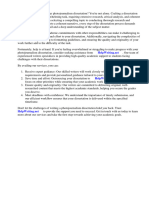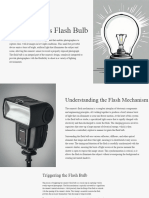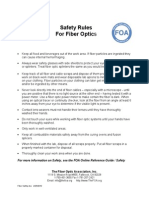3/25/24, 1:31 AM Nikkormat FTn
The Camera Site
Nippon Kogaku K.K. Japan
Home Page
Cameras A-Z
Nikkormat
Acc & Lenses FTn
Next Camera
The story of
Previous Camera
Nikon begun in
Other SLRs 1917 when
three of
Canon A-1 Japan's
Canon AV-1
leading optical
Carena KSM-2
Chinon CM-4 manufacturers
Edixa Reflex merged to form
Exa IIb a
Exacta IIa
Konica Autoreflex
Konica Auto-Reflex T
Konica Auto-Reflex T3
Leica R4
Mamiya NC-1000s
Mamiya ZE
Mamiya ZE-X
Mamiya ZM
Minolta STR101
Minolta X-700 comprehensive, fully integrated optical company known as Nippon Kogaku K.K. (1988
Minolta XG2 Corporate name changed to Nikon Corporation.)
Minolta XG-M
In 1965 Nikon introduced the Nikkormat FT. This camera was the first in a popular series
Miranda Auto Sensorex
Miranda TM of successful Nikon mid-range cameras. Nikkormat FTn was based upon the body of the
Nikkormat FTn original Nikkormat FT. Many of the users who could´nt afford the more expensive and
Nikon EM professional system oriented Nikon F & F2, used this camera as an entry model into the
Nikon F-801s Nikon SLR system. It accepted all the interchangeable Nikkor lenses during those time
Nikon F-401s and is still usable with many of today's AI & AIS lenses. It differs from the more
Nikon FE
sophisticated Nikon models only in that it does not accept the motor drive backs and has
Nikon FE2
Nikon FM2 a non-removable pentaprism viewfinder and fixed focusing screen, which has a 4 mm
Nikon F3 circular microprism surrounded by a 12 mm diameter matte surface
Olympus OM-1 Designed with
Olympus OM-2S sharp and
Olympus OM-4
clear-cut lines,
Olympus OM-10
Pentax Spotmatic still seen in
Praktica B 200 Nikon FM3a
Praktica FX (Introduced in
Praktica MTL 50 February
Ricoh KR-10s 2001), the
Ricoh XR-2s
external
Ricoh XR-S
Topcon Unirex appearance of
Yashica TL Electro X the Nikkormat
Zeiss Icarex 35s camera body
Zenit 12 CD gives an
Zenit- E overall feeling
of mechanical
precision and
dependability
associated
https://thecamerasite.lauro.fi/01_SLR_Cameras/Pages/nikkormat.htm 1/5
�3/25/24, 1:31 AM Nikkormat FTn
with
professional
use. The FTn
was
introduced and
marketed in
1967,
continued to
serve even
after later
models were
introduced.The
2nd
generation of
More about cameras, the Nikon F,
digital the F2 was
photography,tripods Hi- eventually
Fi, uhh.. about all kind discontinued in
of interesting, Please 1975, that has
go to Edwin Leong ´s
excellent Site
shown how
popular it was.
Camerahobby.com
The camera body is made of die-cast aluminum alloy and finished in chrome plating and
assembled of 685 separate components. My FTn belogs to the later versions because it has
black plastic covers both on the film advance lever and the self-timer lever. For identification
among the rest of Nikkormats is quite easy, a "FT" precedes the serial number on the camera
body' and the letter "N" is inscribed next to the film rewind knob and above the light meter
window on the top of the camera. Nikkormat FTn was available in satin chrome or black finish.
The lens in a picture is Nikkor H-C Auto 1:2 ,f = 50mm. In an early Nikkor lenses you
can find these markings. H is for hex which is Latin and translates six (6) and it
indicates that the lens construction has six lens elements and the letter C means that
the lens is coated.
Specifications :
Type: 35mm single-lens reflex.
Metal focal plane (travels vertically). Shutter speeds from 1
Shutter:
to 1/1000 sec. plus B. Built-in self-timer (about 8 sec.).
X and M synch terminals. X synch at 1/125 sec. or slower.
Synchronization:
FP- and MF-class bulbs also usable.
Eye-level prism finder with built-in exposure meter. Shutter
speed visible in finder viewfield. Focusing screen with
Viewing/focusing:
matte/Fresnel field and central microprism grid. Depth-of-
field preview button provided.
Through-the-lens center-weighted measurement at full
Exposure opening. CdS exposure meter powered by a 1.3V mercury
metering: battery. Meter needle visible in the finder viewfield and atop
the body.
Range of EV3 - EV17 at ASA 100 (e.g. f/1.4, 1/4 sec.- f/11, 1/1000
metering: sec.).
ASA sensitivity 12 - 1600
https://thecamerasite.lauro.fi/01_SLR_Cameras/Pages/nikkormat.htm 2/5
�3/25/24, 1:31 AM Nikkormat FTn
setting:
Maximum
f/1.2/f/5.6.
aperture setting:
Meter diaphragm f/1.2/f/32. Couples with both diaphragm and shutter speed
coupling: dial.
Single-stroke film advance lever (135°, throw angle 26°)
Film Advance
also serves for on-off switch of the meter.
Frame Counter Automatic "0" resetting frame counter.
Mirror Lock up Independent mirror lock-up.
Film rewind Crank-type film rewinding.
Standard: 50mm f/2, 50mm f/1.4 and 55mm f/1.2 Nikkor
Lenses: Auto lenses. Nikon F bayonet mount. More than 40 Nikkor
interchangeable lenses available.
Dimensions : 148 x 95 x 54mm (5-13/16 x 3-3/4 x 2-1/8 in) (body)
Weight : 765g (1.68 lb) (body)
Nikon
EM
Nikon
EM was
introduced in 1979. It was Nikon´s weapon against Olympus OM-10 and other
middleweight SLR cameras of various brands. EM has aperture priority auto only,
which means that after you have set the lens aperture the camera sorts out
exposure for you. Easy and convenient. Perhaps not so professional at that time
when the camera was introduced. EM is light because Nikon has used averagely
polycarbonate on it which does not mean that it feels fragile, on the contrary it is
perceptibly sturdy camera.
If you want to compensate for exposure, just press the button and you get a 2
stops compensation for the back light situation or you can use the conventional
https://thecamerasite.lauro.fi/01_SLR_Cameras/Pages/nikkormat.htm 3/5
�3/25/24, 1:31 AM Nikkormat FTn
method (those days) and adjust the ASA/ISO film speeds to fool the camera
metering. Today it looks silly and you might wonder why.
Specifications:
Type : 35mm
single-lens reflex Metering range : EV 2 to EV 18 (i.e., f/2 at 1 sec. to f/16 at
(SLR), aperture- 1/1000 sec. at ASA/ISO 100 and with 50mm f/1.8 lens)
priority automatic
Lens mount :
Film speed range : ASA/ISO 25-1600
Nikon bayonet type
Shutter :
Electronically
controlled, vertical-
travel, metal focal-
plane shutter; step Exposure compensation : + 2 EV when exposure
less speeds from 1 compensation button is kept depressed as shutter release
sec. to 1/1000 sec. button is pressed
(auto mode);1/90
sec. mechanical
speed when set to
M90; B
Film winding lever
: choice of one
Power source : One 3V lithium battery or two 1.55V silver-
continuous stroke
oxide batteries
or series of shorter
strokes
Viewfinder : Fixed
eye-level
pentaprism,TTL
exposure meter;
shutter speed scale Battery power checker : LED lamp lights up to indicate
and exposure sufficient power availability when power check button is
needle visible pressed
inside , 1/90 sec.;
finder coverage
approximate. 92 %
of picture field.
Reflex mirror :
Flash synchronization : Built-in ISO-type hot-shoe,
Instant-return, non-
automatic flash sync at 1/90 sec. Flash sync at 1/90 sec
lockable.
Self-timer:
approx.10-sec. Measures: 135mm(W) x 86mm(H) x 54mm(D)
delay
Exposure
measurement :
TTL center-
weighted exposure
metering at full
aperture.
https://thecamerasite.lauro.fi/01_SLR_Cameras/Pages/nikkormat.htm 4/5
�3/25/24, 1:31 AM Nikkormat FTn
©2005 Reijo Lauro
https://thecamerasite.lauro.fi/01_SLR_Cameras/Pages/nikkormat.htm 5/5







